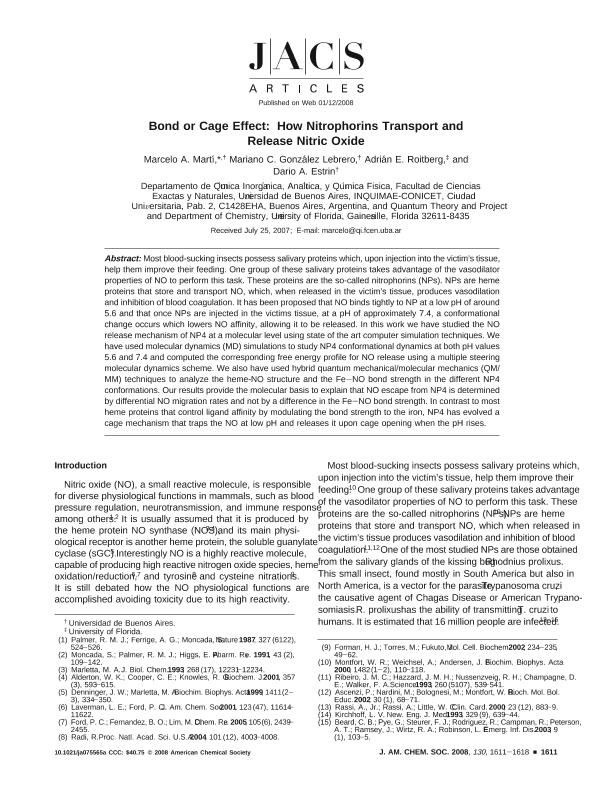Artículo
Bond or Cage Effect: How Nitrophorins Transport and Release Nitric Oxide
Fecha de publicación:
02/2008
Editorial:
American Chemical Society
Revista:
Journal of the American Chemical Society
ISSN:
0002-7863
Idioma:
Inglés
Tipo de recurso:
Artículo publicado
Clasificación temática:
Resumen
Most blood-sucking insects possess salivary proteins which, upon injection into the victim's tissue, help them improve their feeding. One group of these salivary proteins takes advantage of the vasodilator properties of NO to perform this task. These proteins are the so-called nitrophorins (NPs). NPs are heme proteins that store and transport NO, which, when released in the victim's tissue, produces vasodilation and inhibition of blood coagulation. It has been proposed that NO binds tightly to NP at a low pH of around 5.6 and that once NPs are injected in the victims tissue, at a pH of approximately 7.4, a conformational change occurs which lowers NO affinity, allowing it to be released. In this work we have studied the NO release mechanism of NP4 at a molecular level using state of the art computer simulation techniques. We have used molecular dynamics (MD) simulations to study NP4 conformational dynamics at both pH values 5.6 and 7.4 and computed the corresponding free energy profile for NO release using a multiple steering molecular dynamics scheme. We also have used hybrid quantum mechanical/molecular mechanics (QM/MM) techniques to analyze the heme-NO structure and the Fe−NO bond strength in the different NP4 conformations. Our results provide the molecular basis to explain that NO escape from NP4 is determined by differential NO migration rates and not by a difference in the Fe−NO bond strength. In contrast to most heme proteins that control ligand affinity by modulating the bond strength to the iron, NP4 has evolved a cage mechanism that traps the NO at low pH and releases it upon cage opening when the pH rises.
Palabras clave:
protein molecular dynamics
Archivos asociados
Licencia
Identificadores
Colecciones
Articulos(INQUIMAE)
Articulos de INST.D/QUIM FIS D/L MATERIALES MEDIOAMB Y ENERGIA
Articulos de INST.D/QUIM FIS D/L MATERIALES MEDIOAMB Y ENERGIA
Citación
Marti, Marcelo Adrian; González Lebrero, Mariano Camilo; Roitberg, Adrián E.; Estrin, Dario Ariel; Bond or Cage Effect: How Nitrophorins Transport and Release Nitric Oxide; American Chemical Society; Journal of the American Chemical Society; 130; 5; 2-2008; 1611-1618
Compartir
Altmétricas




